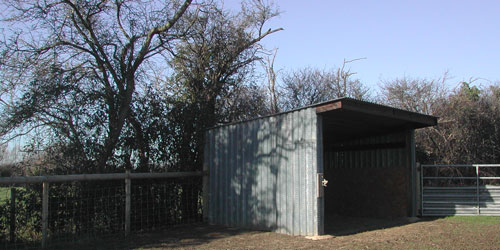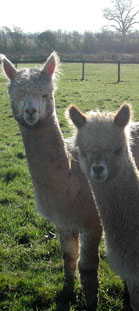Fencing & Shelter
Alpacas rarely challenge boundaries so fencing is relatively straight forward. We were so surprised after keeping cattle for so many years at how undetermined they are to escape!
Barbed wire is not to be used as they can become entangled and may seriously injure themselves when trying to break away. The same applies to bramble bushes when they are fully fleeced so fencing needs to prevent them from coming into direct contact with hedges.
Electric fences can be useful when the animals are newly shorn however will be ineffective once the fleece reaches any length.
All our fencing consists of is post and rail with galvanised sheep wire stapled from post to post. This can be erected relatively quickly and inexpensively.
Smaller catch pens are helpful when conducting routine husbandry tasks but again these can be constructed easily. 
Alpacas do not enjoy persistently wet weather or driving rain but a good hedge and simple field shelter is really all they require. They are well equipped to cope with the cold and enjoy nothing more than a sunny crisp wintry morning.
They do not need to be over wintered inside and therefore are much less labour intensive than some of the more traditional breeds of agricultural animal.
Our alpacas will always stand out of heavy rain. This is when you need to ensure that the shelter provided is large enough to accommodate all of them; otherwise the weakest will be pushed out.
Housing is also very beneficial when the alpacas are having their cria. In the unusual circumstance that a cria is born prematurely or is particularly weak it is a great advantage to mother and baby if they can have access to shelter.
A field shelter can be reasonably easy and cheap to construct. The shelter merely needs three sides and a roof.
| 
